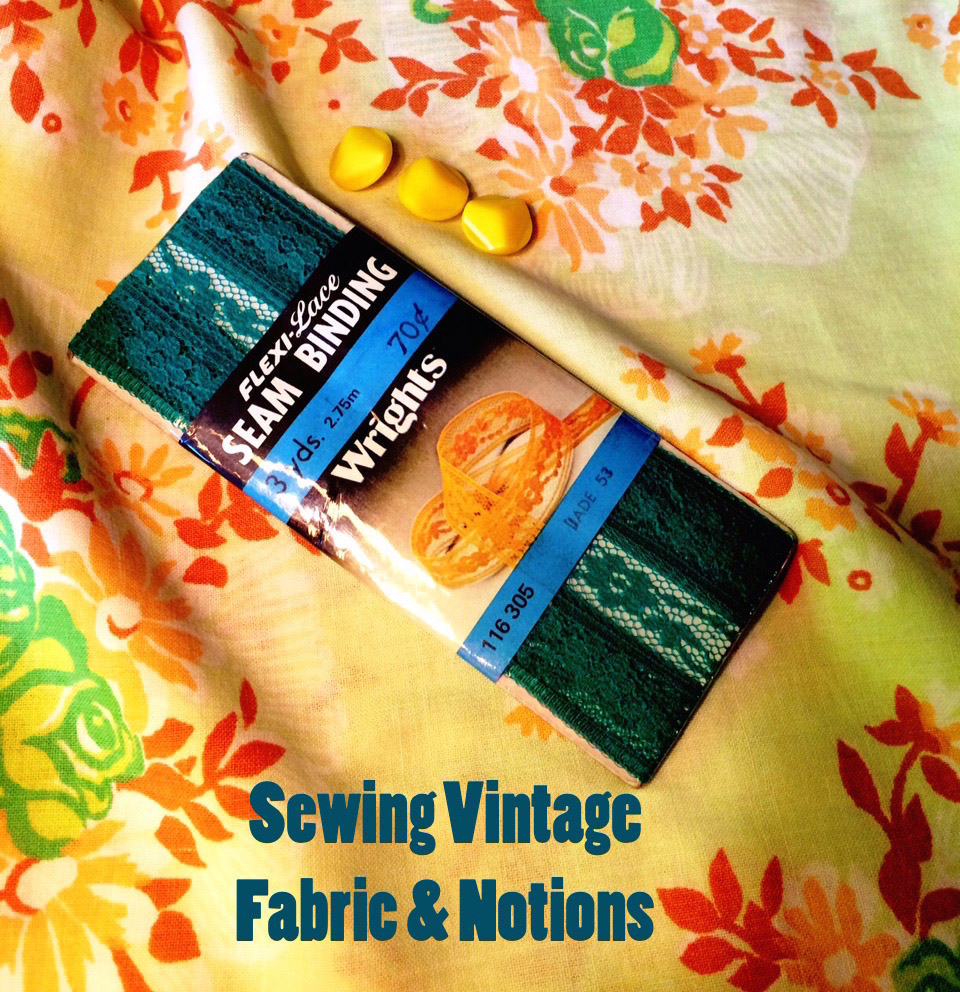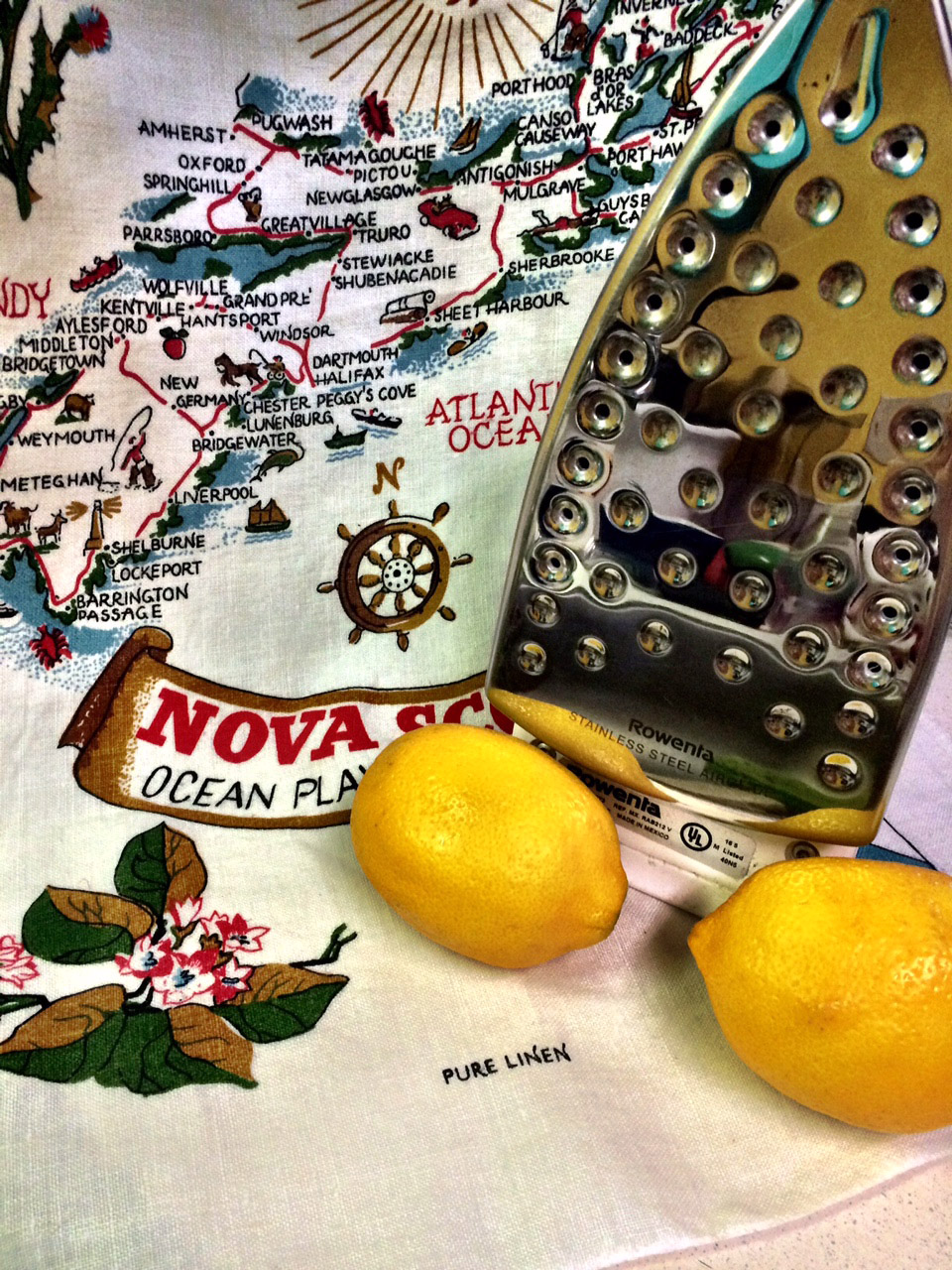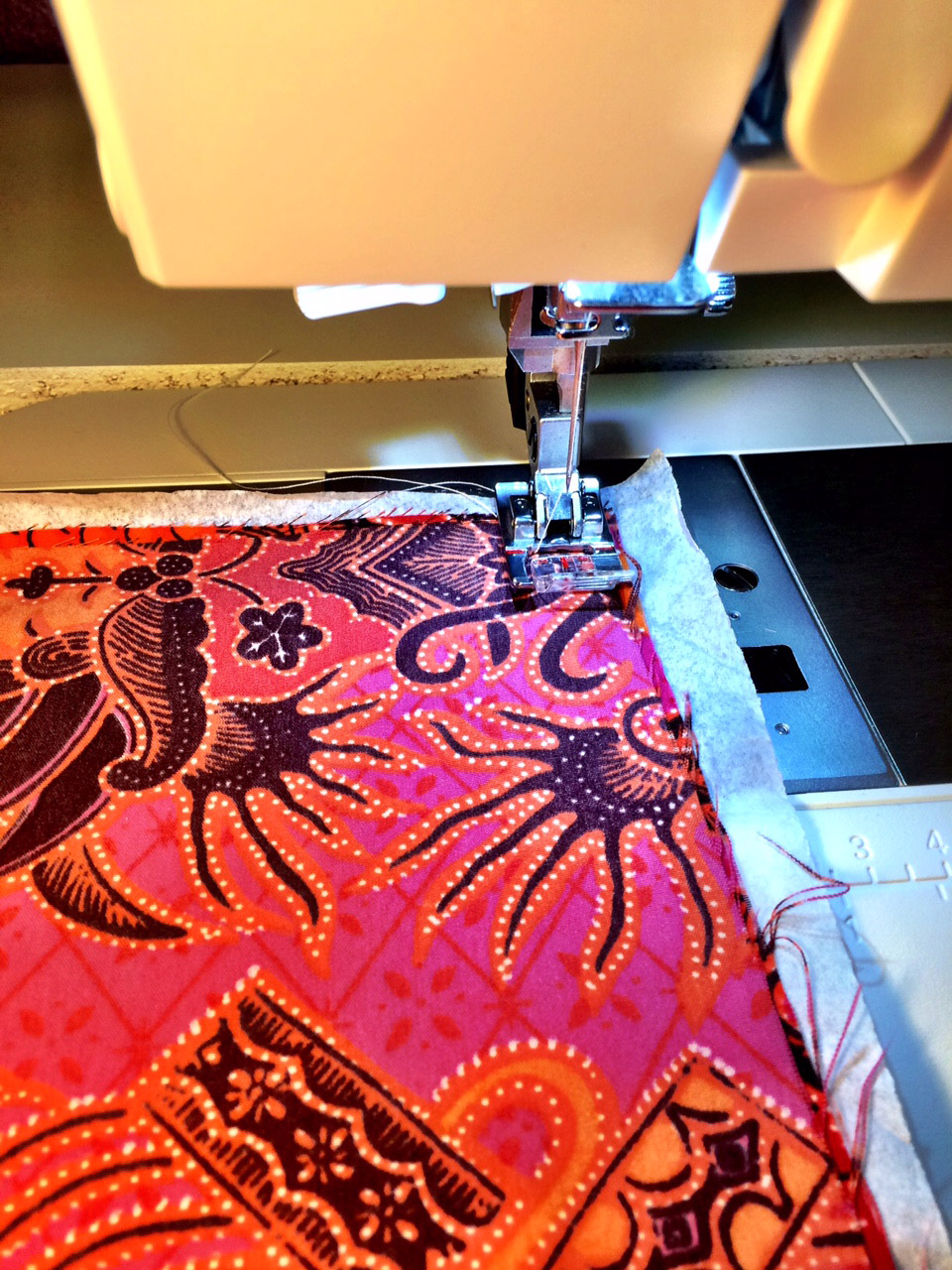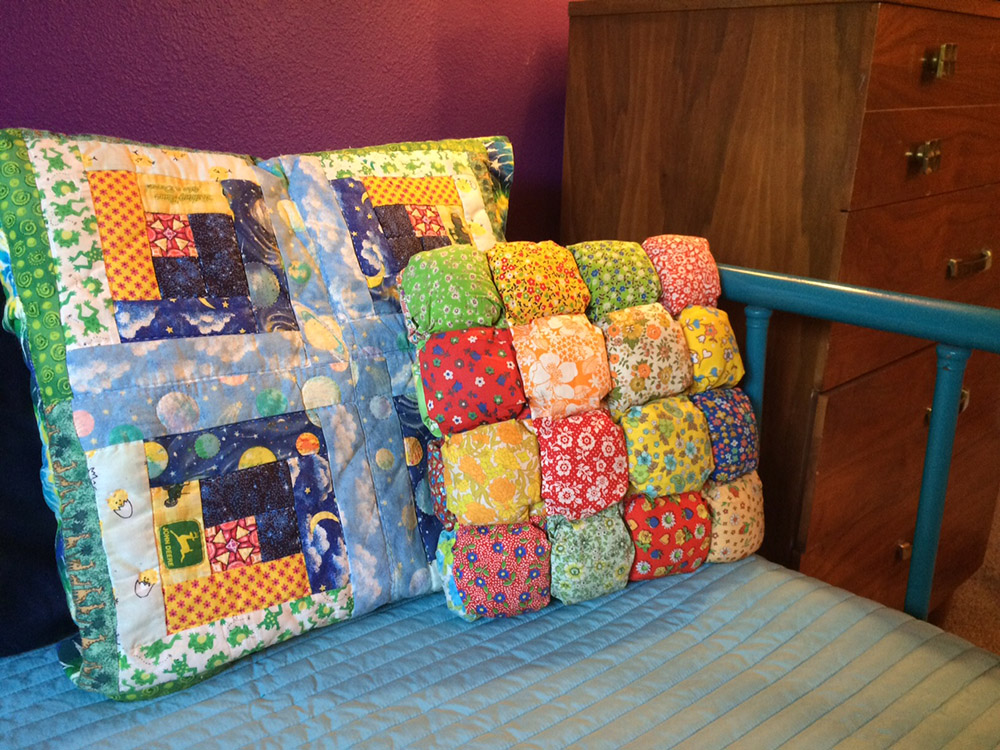 Show off your love of all things vintage by incorporating fabric and notions from bygone eras into a sewing project. A little bit of vintage flair can make a modern project look delightfully retro. I’m always on the hunt for unique fabric or notions. Read on to learn my shopping tips, care instructions, and sewing secrets for working with vintage fabric and notions. I’ll also share a few fun project ideas that are designed to highlight your taste for retro.
Show off your love of all things vintage by incorporating fabric and notions from bygone eras into a sewing project. A little bit of vintage flair can make a modern project look delightfully retro. I’m always on the hunt for unique fabric or notions. Read on to learn my shopping tips, care instructions, and sewing secrets for working with vintage fabric and notions. I’ll also share a few fun project ideas that are designed to highlight your taste for retro.
Shopping Spree
 Finding vintage fabric and notions is at least half the fun. The most obvious, and often most successful place to look is your local thrift store. Donations are made every day to these locations and one person’s discards are now your treasure. Be sure to visit the big, well known shops such as Goodwill, ARC, The Salvation Army, and Savers. These thrift stores process the donations quickly and as they are well known receive donations regularly.
Finding vintage fabric and notions is at least half the fun. The most obvious, and often most successful place to look is your local thrift store. Donations are made every day to these locations and one person’s discards are now your treasure. Be sure to visit the big, well known shops such as Goodwill, ARC, The Salvation Army, and Savers. These thrift stores process the donations quickly and as they are well known receive donations regularly.
In addition to the big names in the thrift industry be sure to check out local thrift stores run by non-profits. Also, be on the lookout for consignment shops and booth rental antique stores. These places often have a wide selection of items provided by several vintage enthusiasts. Lastly, try stopping by rummage sales, flea markets, and yard sales. These may be a bust, but you might discover a local crafter with a stash of vintage fabric and notions priced to sell.
Top Shopper Tips

Thrift stores may intimidate you. Shopping here feels more like hunting. Plus, sometimes the stores have a mothball smell to them and the other shoppers are a little aggressive. First off, laying your hands on a vintage scarf after digging through a pile of Garfield themed hankies will feel triumphant. This is the thrill of thrifting, finding something that is truly one-of-a-kind. You’ll learn to ignore the occasional musty scent and sometimes you’ll just need to elbow the other bargain hunters aside (or circle the aisle and come back once they’ve moved on). Here are some additional tips for shopping in thrift or consignment stores:
- 1. The Crafty Zoo: Find the craft section. Every thrift store has a craft section. It can be a bit messy, depending on the shop and it may have 300 pony beads when you’re looking for lace trim. However, always locate this section first. Dig through the piles and look for bags of old buttons or a box of zippers. A box of vintage trims will come in handy and add a touch of retro to several projects.
- 2. The Fabric Flats: Also be on the lookout for the fabric aisle. Usually near the linens, this section of the shop is sure to have a variety of folded fabrics all waiting for a new purpose. The fabric aisle may be combined with the craft section, or the thrift store staff may have hung the yardage on the clothing racks. If you don’t see it just ask, an employee will always point you in the right direction.
- 3. Linen Land: When looking for yardage to make a large scale project take a peek at the linens section. Buying a set of vintage sheets is an easy way to pick up several yards of matching fabric. When shopping in booth rental antique shops, there are often booths that specialize in table linens and other fabric sundries. I for one have a weakness for retro tea towels.
- 4. Clothing Capers: Moving into the clothing portion of the shop, you’re sure to find a variety of one-of-a-kind items. When planning to harvest fabric for a project it may be tricky to find enough in the garment area. Always check the dress section and the larger sizes, these may provide enough fabric for a purse or pillow. Also, be on the lookout for fun buttons. Check garments for interesting closures, you may be able to purchase several vintage buttons for only a few dollars.
Buyer Beware
While prowling for fabric and notions from a bygone era, be sure to watch out for flaws. Give the fabric, linen, or garment a thorough once over. Anything with stains in the center of the item should be avoided. Unless you plan to dye the item a darker color stains are often set-in. Also watch for rips and tears that mar the fabric causing runs.
Fluff & Fold

Prepping fabric for sewing may be the most mundane part of the process, but it is necessary. When working with vintage fabrics it’s important to take extra care when laundering and pressing. Use these tips for cleaning and prepping success:
- 1. Fiber Content: Always refer to the tags for fiber content. If the item no longer has tags or was handmade, you’ll need to guess the content. Compare the feel of the fabric to garments in your closet. When you find one that feels similar and the fabrics appear to match check the newer item’s content tag for instructions. When in doubt try spot cleaning a small inconspicuous area of the fabric. Allow it to dry and check for any changes.
- 2. Cold Water: If the fabric is washable, use cold water and a light detergent. Also, remember a little detergent goes a long way.
- 3. Hand Wash: For especially old or delicate items consider hand washing. For best results, run a sink of cold water adding a drop of light detergent and swish the fabric through. If the fabric has a musty scent, you may allow it to soak for up to an hour. Rinse the fabric in the sink, then gently squeeze the water out. Never ring water from vintage fabrics as this can cause damage. Lay the item flat to dry.
- 4. Bleach Alternative: Use lemon juice to brighten fabrics. Lemon juice is safer than bleach and will quickly turn dingy whites bright and fresh. Add up to ¾ cup to a washing machine load. If hand washing in the sink use a few tablespoons to ¼ cup. Soaking items in a lemon juice/water mixture will also remove unwanted smells.
- 5. Press Gently: Refer to the fiber content to determine the heat setting before pressing vintage fabrics. If the fabric is especially delicate use a lower heat setting than recommended. A press cloth will protect the fabric from scorch marks. If a stubborn wrinkle won’t leave, increase the heat and steam setting incrementally, letting the fabric cool completely between increases.
Stitching Solutions
 Now that the fabric is prepped, the stitching fun can begin. Consider the following suggestions when sewing vintage fabrics:
Now that the fabric is prepped, the stitching fun can begin. Consider the following suggestions when sewing vintage fabrics:
- 1. Thread Choice:Select appropriate thread for the fiber content. This is even more important when working with vintage fabrics. For instance use silk thread when working with silks and wools. For more information on the various types of threads out there, be sure to check out ZJ Humbach’s video.
- 2. Seam Finishes: Due to the delicate nature of vintage fabrics enclosed seam finishes tend to work best. By enclosing the fabric, it is less likely to fray or tear during use. Colleen Exline describes five different enclosed seam finishes in her video; take a look for step by step instructions.
- 3. Tissue Paper: Some vintage fabrics may need a bit of reinforcement during stitching. Place a piece of tissue paper under the fabric and while you stitch. This will keep the fabric from bunching up in the sewing machine while you stitch.
- 4. Slow Down: Set the stitching speed on the sewing machine to the lowest level. Sew at this speed until you are comfortable working with the vintage fabric and notions.
Inspiration Alley
Not sure what to make with your fabulous vintage find? Here are a few ideas to get your creativity flowing.
 Cotton Scraps: Gather up small scraps of retro cottons to make a pillow. Whether you quilt the cottons together in a traditional log cabin formation or use a puff quilt technique the vintage fabrics will shine. Check out this video on our sister site National Quilters Circle for log cabin instructions.
Cotton Scraps: Gather up small scraps of retro cottons to make a pillow. Whether you quilt the cottons together in a traditional log cabin formation or use a puff quilt technique the vintage fabrics will shine. Check out this video on our sister site National Quilters Circle for log cabin instructions.
Pocket Power: Use a small scrap of vintage fabric to create a cute patch pocket. Add in delightful vintage trims to make it unique. For complete instructions, check out Beth Bradley’s patch pocket video.
 Tea Towels: Make a statement with a strip skirt featuring a panel or two taken from vintage tea towels. Ellen March provides detailed instructions on how to make this skirt in a jiffy. This would also work well with vintage silk scarves, though a lining might be required.
Tea Towels: Make a statement with a strip skirt featuring a panel or two taken from vintage tea towels. Ellen March provides detailed instructions on how to make this skirt in a jiffy. This would also work well with vintage silk scarves, though a lining might be required.
Curtain Call: Create a window statement with vintage curtains. If you found a set of sheets or several yards of fabric, why not make curtains? Watch Kristina Saccone’s video for an easy curtain sewing technique.
Now that you have the know-how you’re ready to stitch up a perfectly vintage project. So get out there and stitch to your heart’s content!
Related Videos:
Get in touch! Leave a comment or email editor@nationalsewingcircle.com.

Thanks for the wonderful inspirations.
Love these hints a lot because im spite I don’t sew a lot, I like those small projects that compliment our house needs. They are taken from reality. Very true all you mentioned here. Sometimes I sew pillows covers and adult burbs for a near by facility long care center for senoirs. These are items that they must change 2 or 3 times in a regular day. Where do I take the material from? As you already wrote. From every single piece of cloth from shirts or dresses that someone discard in the past.
My favorite source of vintage cotton is men's extra large cotton shirts. The backs are almost a yard! Cut out the seams even if your seam ripper skills are awesome: the seams allowances are small and weakened by the ancient needle holes. I find Hawaiian aloha shirts in Florida the very best pickings!
So interested. I have a pattern for a vintage quilt I wanted to make it with various colors if velvet or velour material.
Love the ideas
enjoy hints and instructions